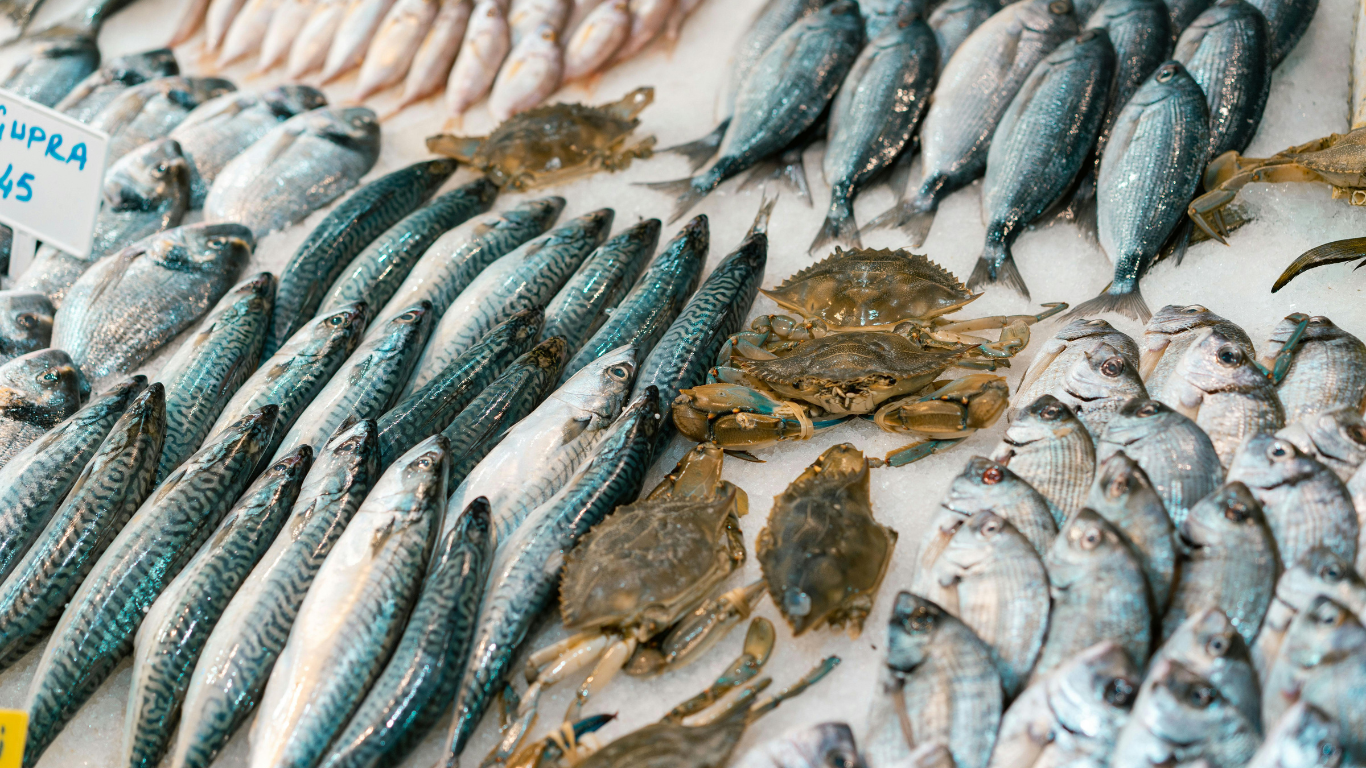I’ve always been a seafood fan, and nothing beats the thrill of finding fresh fish straight from the source. That’s why Ramnagar Fish Market in Hyderabad is one of my favorite spots. It’s the biggest fish market in the twin cities of Hyderabad and Secunderabad, located along the road connecting Musheerabad to Ramnagar. This bustling market is a haven for anyone who loves fish, prawns, or crabs, offering a massive variety at prices that won’t break the bank. From the early morning chaos to the vibrant energy of vendors and buyers, it’s an experience like no other. In this article, I’ll take you through what makes Ramnagar Fish Market so special, how to visit, what you can find, and tips for a great trip. Let’s dive into this seafood paradise and explore its wonders together.
What Is Ramnagar Fish Market?
Ramnagar Fish Market is the largest fish market in Hyderabad and Secunderabad, tucked away in the lively Ramnagar neighborhood. It’s been a go-to spot for seafood lovers for years, drawing crowds from all over the city. On weekdays, about 40 tons of fish are sold here, and on Sundays, that number jumps to 50 tons. The market kicks off at 6 AM, and by 8 AM, most of the fresh catch is already gone—that’s how popular it is! You’ll find a huge variety of seafood, from pomfret and kingfish to prawns and crabs, all brought in fresh from nearby shores and districts like Karimnagar and Godavari. It’s not just a market; it’s a cultural hub where locals and retailers come together to buy, sell, and enjoy the freshest seafood around.
Why Is It So Popular?
Ramnagar Fish Market is a hit because of its massive scale and unbeatable freshness. It’s the biggest in the twin cities, offering a wide range of fish at wholesale prices. People love the early morning buzz—fishermen unload their catch, and buyers rush in for the best picks. It’s also a tradition for many during festivals like Mrigasira Karthi, when crowds swell to buy fish, even during tough times like the pandemic, as seen in past news.
What Kind of Seafood Can You Find?
You’ll be spoiled for choice here! The market has everything—pomfret with its delicate flavor, rich kingfish, nutrient-packed sardines, and tasty mackerel. There are also prawns, including tiger prawns, plus crabs, lobsters, and even red snappers. Fish come from places like Kurnool, Nizamabad, and coastal areas, ensuring a fresh and diverse selection for every seafood lover.
How Can You Visit the Market?
Visiting Ramnagar Fish Market is an adventure in itself. It’s located in Zamistanpur, Hyderabad, along Ramnagar Road, about 1.3 km from Sitafalmandi railway station. If you’re using public transport, the nearest metro is RTC X Roads on the Green Line, a 5-minute walk away. Buses like 1/25S and 45A stop nearby at Gp Colony Community Hall. Driving? Use apps like Waze for live traffic updates, but parking can be tricky, especially on Sundays. The market opens at 6 AM, so get there early to beat the crowd and grab the freshest catch. It’s best to go on a two-wheeler or hire an auto since the lanes are narrow. Bring cash and a bag to carry your haul—this place gets busy fast!
What Are the Best Timings?
The market starts at 6 AM, and the best time to visit is between 5 AM and 7 AM. By 8 AM, most of the good stuff is sold out. Sundays are the busiest, with 50 tons of fish sold, so weekdays might be calmer if you prefer less chaos. It’s a morning market, so don’t plan a late visit—you’ll miss the action.
How to Get There Easily?
From central Hyderabad, take the metro to RTC X Roads, then walk 5 minutes to the market. Buses like 1P/25S stop at Gangaputra Colony Bus Stop, also a 5-minute walk. If you’re coming by train, Jamai Osmania station is 24 minutes away on foot. Driving from Musheerabad takes about 5 minutes, but park wisely—lanes are tight, and Sundays are packed, as many reviews note.
What Makes the Market Special?
Ramnagar Fish Market isn’t just about buying fish—it’s an experience. The atmosphere is electric, with vendors shouting, fishmongers cleaning fish on the spot, and the smell of fresh seafood filling the air. The colorful stalls and bustling crowds create a lively vibe that’s hard to find elsewhere. You can see fishermen unloading their hauls straight from the shore, ensuring the fish is as fresh as it gets. Beyond shopping, there are nearby eateries where you can enjoy spicy fish curry or grilled prawns made with the day’s catch. The market’s scale—40 to 50 tons of fish sold daily—sets it apart, making it a key spot for both locals and retailers. It’s a place where you feel the heartbeat of Hyderabad’s seafood culture.
What’s the Atmosphere Like?
Walking through Ramnagar Fish Market is a sensory overload—in a good way! You’ll hear vendors calling out prices, see fish being filleted with skill, and smell the ocean in the air. The stalls are colorful, packed with shiny fish and live crabs. It’s crowded, especially on Sundays, but the energy is infectious, making it a unique cultural experience.
Can You Eat There?
Yes, you can! Around the market, there are small eateries serving fresh seafood dishes. You can try local favorites like spicy fish curry, grilled prawns, or a tangy seafood salad. These spots use the day’s catch, so the food is bursting with flavor. It’s a great way to enjoy your visit without cooking, and the regional recipes add a special touch.
What Challenges Should You Expect?
Ramnagar Fish Market is amazing, but it’s not perfect. The place can be messy—wastewater often clogs the streets, and the smell might be strong if you’re not used to fish markets. Reviews mention it’s not well-maintained, with no proper drainage system, which can make walking tricky. It gets super crowded, especially on Sundays, and parking is a hassle—lanes are narrow, so two-wheelers are better. Some buyers warn about the cleaning section; keep an eye on your fish to avoid mix-ups, and confirm rates (around 15 rupees per kg for fish, 10 for prawns) to avoid overcharging. Despite these issues, the fresh seafood and low prices make it worth the visit if you’re prepared.
What Are the Cleanliness Issues?
The market struggles with cleanliness. There’s no proper system to drain wastewater, so the streets can be muddy and smelly. Reviews often mention the lack of management—fish waste isn’t cleared quickly, and the area feels untidy. It’s a common issue in fish markets, but better upkeep would make the experience more pleasant for everyone.
How to Avoid Crowds?
To dodge the crowds, visit on a weekday between 5 AM and 7 AM—Sundays are packed with 50 tons of fish sold. Arrive early to get the best catch and avoid the rush. If you must go on a Sunday, get there right at 6 AM before the bulk buyers and retailers sweep in, as many locals suggest.
Tips for a Great Visit
To make the most of your trip to Ramnagar Fish Market, come prepared. Arrive early—between 5 AM and 7 AM—to get the freshest fish before they sell out. Bring your own bag to carry your purchases, as the market doesn’t provide them. Wear shoes you don’t mind getting wet, since the streets can be messy with water and fish waste. Carry cash, as most vendors don’t take digital payments. Confirm cleaning charges upfront (15 rupees per kg for fish, 10 for prawns) to avoid surprises, and keep an eye on your fish at the cleaning section. If you’re driving, opt for a two-wheeler—parking is tough. Lastly, explore nearby eateries to enjoy a fresh seafood meal after shopping. With these tips, you’ll have a fantastic time!
What Should You Bring?
Bring a sturdy bag to carry your fish, as the market doesn’t provide them. Wear old shoes or slippers—streets are wet and messy. Carry cash in small notes for easy payments. A small towel or sanitizer is handy, since you’ll be handling fish. If you’re sensitive to smells, a mask might help with the strong fishy odor.
How to Bargain Smartly?
Bargaining works best if you’re buying in bulk—vendors often lower prices for larger orders, especially for parties. Prices are usually fixed for small buys, but you can still ask politely for a discount. Compare rates at different stalls, and don’t hesitate to walk away if the price feels high—vendors might call you back with a better deal.




